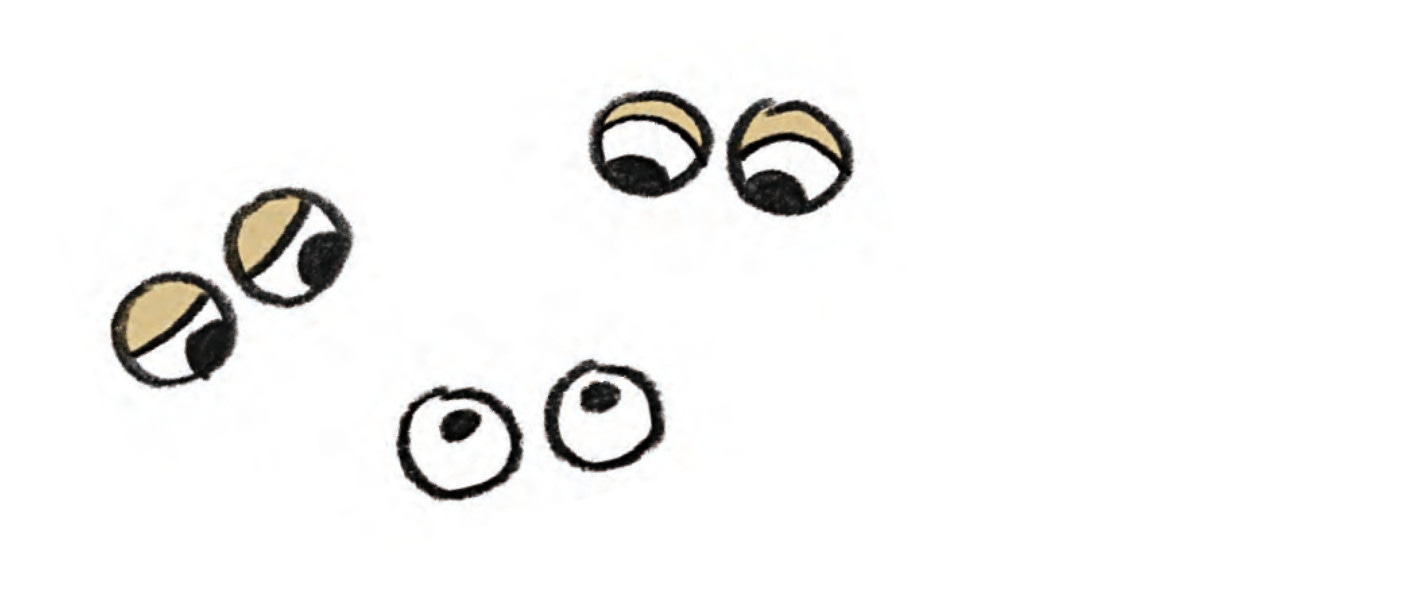Social Density: It's key to coherent self-organization
One of the many weaknesses of command-and-control organizing (a.k.a. management the social technology) is that it is "socially loose".
In command-and-control organizing, control and pressure are performed from the top-down. It’s the organization’s top that’s in charge in this way of operating, always. But centralization and steering erode commitment among an organization’s members, and weakens team coherence.
Command-and-control has been the standard way of operating most organizations for what appears to be forever: We all know exactly how command-and-control works. The problem is: Too many of us have since long accepted the notion that other, more effective forms of organization based on self-organization principles (a.k.a. real leadership) are "less likely" to happen, "more difficult", "more chaotic/risky" and/or "less efficient". It is this continuing disbelief in self-organization that spells trouble: By accepting notions that self-organization “isn’t normal”, our thinking becomes the biggest barrier to the renaissance of organizational leadership that’s needed in complex and dynamic markets.
Variations of the command-and-control theme promise relief of this, but ultimately they just serve to perpetuate centralized control. Such change placebos include concepts like delegation, participation, or the creation of Islands of Happiness within the organization: On such islands, slightly different and more lofty rules apply, at least temporarily, and as long as the exceptionalism cannot destabilize the command-and-control system that applies to the rest of the system.
Coherent self-organization is very different from command-and-control. It is, one might say, about disciplined togetherness. Self-organization is always about "being socially dense, collectively". Once we think about organizations in terms of social density, is becomes clear that self-organization cannot be appropriately described through the metaphors of "top-down", or "bottom-up". If anything, self-organization is about acknowledging outside-in market-pull, which relentlessly applies its forces on any organization today. Then, within an organization, these pull-forces from outside markets must be responded to, constructively, through inside-out value creation.
"Self-organization is about disciplined togetherness.
About being socially dense, collectively."
In short: Organizations actually do neither have heads, nor asses. Instead, they consist of outside-in pull dynamics, as well as inside-out value creation dynamics that materialize between units of value creation, usually referred to as teams. Looking at organizations that way, it is fair to say that they all have in fact outsourced the steering to markets a long, long time ago. Which is why market-driven, socially dense self-organization became way more effective than top-down steering, since the 1970s.
Control, in self-organization, arises from within the team structure. Here, the most important mechanisms of control are a combination of_
Transparency - which means giving everyone and every team access to all information, and giving everybody the means to look at the information at the same time and in the same way.
Peer pressure, or social pressure, based on transparency. Which is not as bad as it may sound at first: Think of social pressure as an enabler of self-organization, not top-down tyranny (or George Orwell’s novel 1984). While command-and-control tends to individualize the members of the organization, self-organization must always focus on the team (not the individual) as the smallest unit of performance. And that is always a social unit.
"In coherent self-organization, control happens through a combination of two major forces: Transparency and Peer Pressure."
There are a few pre-conditions, in addition to transparency, that are necessary in order to enable team-based social density, while maintaining coherence, even in the largest organizations.
Peer pressure, it turns out, is likely to happen if joint team performance is measured (as opposed to measuring supposed individual performance through negotiated targets, personal measures or appraisal). This can be achieved by using Relative Targets, and by abolishing all individual targets/measures, performance appraisal and bonus systems.
Another pre-condition is shared principles (as opposed to opposed rules) which bind team members and the organization as a whole to joint standards of behavior, guarded by everyone. Rules, by contrast, bind people into obedience and followership - something that runs counter to self-organization, of course. This can be achieved by eliminating most rules (such as time controls and travel policies). By iteratively agreeing on a compact set of highly prominent principles, organization-wide (such as "We treat all our available resources responsibly"). And by articulating a "Letter to Ourselves" for the organization.
Thirdly, peer pressure requires to put people with mastery in charge - as opposed to accentuation of positional, formal power by bosses. This can be achieved by accentuating roles, instead of positions, combined with establishing a decentralized organizational model based on principles of Cell Structure Design. And by establishing consultative individual decision-making for decisions beyond the team level.
"Decentralization and coherent self-organization:
They are the two sides of the same coin."
All of these characteristics can be observed in the best organizations: Those featuring the highest overall levels of self-organization, such as Handelsbanken, Toyota, dm-drogerie markt, Southwest Airlines, or W.L.Gore. These company cases beautifully highlight that self-organization, in organizational reality, must always be combined with the principle of decentralization of decision making towards roles and teams in the organizational periphery towards roles and teams in the organizational periphery. In other words: Decentralization and self-organization are the two sides of the same coin. This illustrates why frameworks and methods that supposedly "produce" self-organization - from blockchain to holacracy - are actually inapt and unlikely to significantly contribute to anything good. The cases of real-world, large-scale, long-term self-organized companies, on the other hand, prove that the future of (self)organization is already here. It is just very unevenly distributed.



